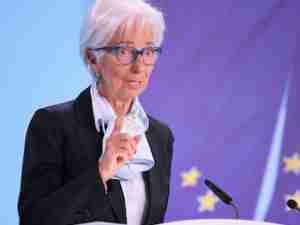Asia Is About to Face a Significant Dollar Stress Test
By: Sid Verma | Nov 29 2016 at 01:43 PM | International Trade
For Asian markets, 2017 could be the year of the dollar crunch.
Foreign portfolio flows have taken a sharp downturn since Donald Trump’s election victory, with $15 billion fleeing Asian bonds and stocks this month alone — close to 30 percent of year-to-date inflows to the region, according to Deutsche Bank AG — as a strengthening greenback and a bevy of protectionist policies from the president-elect darken the growth prospects for emerging markets.
Lending spreads, domestic demand and the resolve of domestic central banks to offset liquidity shortages will be tested next year, analysts warn, as key sources of dollar flows to the region — trade and portfolio inflows — may unravel if Trump makes good on his key campaign proposals.
A slew of investment banks this week, including Deutsche Bank AG, Citigroup Inc, Morgan Stanley and Societe Generale SA, reckon the pain for emerging markets will intensify in 2017, citing, in part, the rising cost of servicing dollar debts amid a strengthening greenback relative to local currencies, and higher Fed policy rates.
“The [debt-servicing] challenge looks even fiercer for non-US borrowers who have borrowed in dollars — dollar strength will make it harder to repay the debt,” SocGen analysts, led by Brigitte Richard-Hidden, wrote in a report on Tuesday.
“There are plenty of them, as the outstanding dollar-denominated credit to the rest of the world has more than doubled over the past 10 years to nearly $10 trillion,” analysts at the French bank conclude. “EM countries and corporations in particular have been keen on borrowing in dollars ([to the tune of] $3.2 trillion).”
At the heart of the challenge, according to analysts: a tighter U.S. trade position with the region in the coming years, which would shrink the pool of dollars floating overseas and make it harder for emerging markets to settle cross-border trade and service hard-currency debts.
“Each of these sources of dollars — whether from trade, portfolio flows or debt issuance — could be at risk in the new post-election regime,” Deutsche Bank strategists, led by Mallika Sachdeva, wrote in a research note on Monday. “This could mean a reduction in trade surpluses in the region: exports could suffer from protectionist efforts.”
While a strong greenback and regulatory reforms have ignited fears about a dollar squeeze outside the U.S. — challenging leveraged fixed-income trades in euros and yen this year that rely on cheap dollar funding — Asian markets have been relatively insulated from dollar liquidity stresses over the past two years.
Cross-currency basis swap spreads in Asia, which reflect the cost to procure the U.S. currency, have largely held steady, amid swelling current account surpluses, foreign portfolio flows, and the move by Asian issuers to swap the proceeds of their offshore bond issuance into local currency, boosting the domestic supply of dollars.
This benign dynamic can no longer be taken for granted, the Deutsche Bank analysts warn.
Evidence of dollar-funding pressures are already emerging in funding markets in the Philippines, South Korea, Malaysia and India most notably over the past month, although there may be local forces at work too, according to Deutsche Bank, updating their warning earlier this month that de-globalization in money markets could roil emerging markets next year.
Going forward, the Deutsche analysts are concerned that bullish U.S. dollar funding conditions in recent years look poised to unravel — contained market volatility, an effective federal funds rate below a level implied by the Taylor rule, and a low premium for dollar borrowing at the long-end of the yield curve.
“As U.S. rates are hiked, term premium normalizes higher, and higher volatility becomes the norm, this will weigh on dollar flows to Asia,” Sachdeva and team write.
Another risk factor: a repatriation of U.S. corporate earnings held in Asian markets, if Trump makes good on his campaign promise to reform the tax code. Deutsche strategists calculate Singapore has $100 billion of such funds alone, underscoring the city-state’s status as center for treasury departments around the world.
The Deutsche analysts are by no means painting a doomsday scenario for Asian markets next year — Asian central banks have a large war-chest of foreign-exchange reserves (which, including Japan stand at $6.8 trillion), while, as with the rally post Brexit-vote, capital flows to Asia next year could remain strong.
But they warn the Trump regime is a game-changer for a region that, as a whole, has been largely lavished with dollar liquidity in recent years. “To the extent that central banks act as a backstop to replenish dollar lost to outflows, dollar liquidity could stay manageable in Asia. However, should central banks choose to pull back – either on account of reserves adequacy or to allow currencies to adjust for competitiveness reasons — dollar liquidity could have much further to tighten in Asia.”
In sum, technical indicators — spreads for short-term corporate and banking funding, cross-currency basis spreads, front-end onshore forward markets — may portend a more challenging outlook for dollar liquidity in Asia next year, even if offshore bond markets remain hospitable for issuers in the region.
